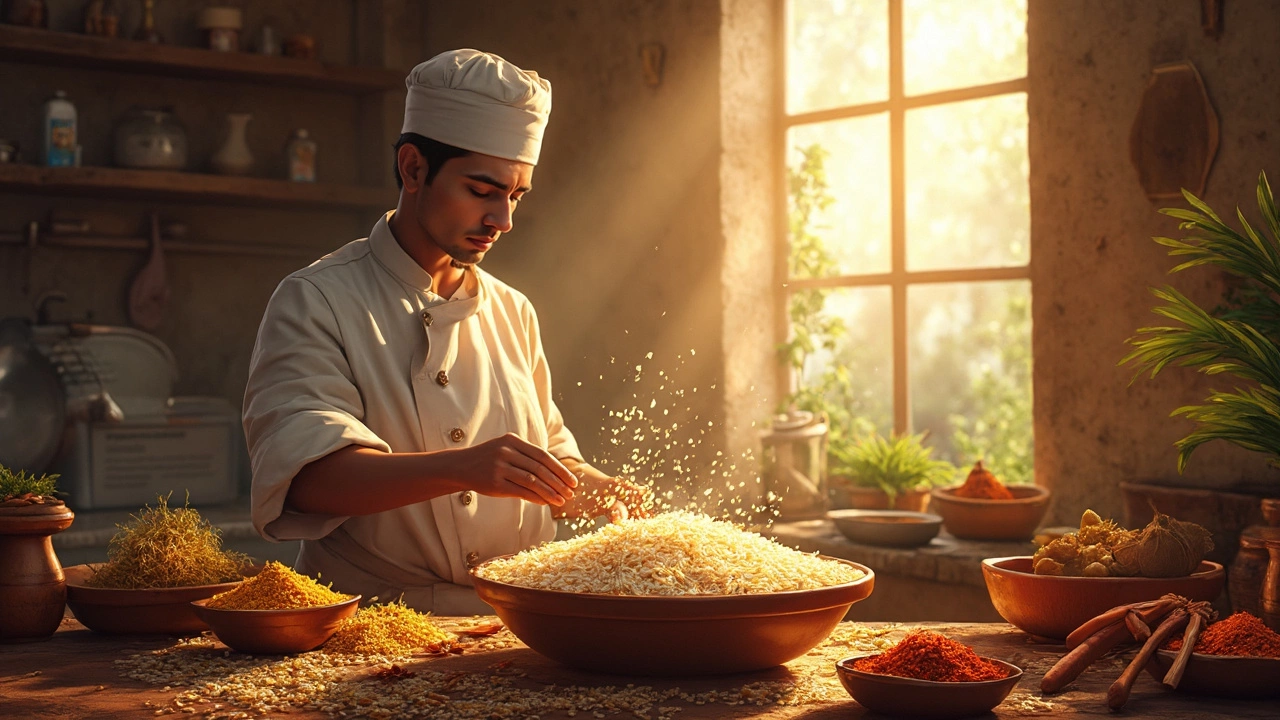How to Soak Basmati Rice – Simple Steps for Perfect Grains
When working with Soak Basmati Rice, the practice of immersing basmati rice in water before cooking to improve texture and reduce cooking time. Also known as pre‑soaking rice, it creates longer, fluffier grains that stay separate after steaming.
One of the biggest reasons cooks soak basmati rice is to let the grains absorb water, which leads to a noticeable increase in length after cooking – a classic semantic triple: soaking basmati rice improves grain elongation. At the same time, the water softens the outer bran layer, so the rice cooks faster and uses less fuel – another triple: soaking basmati rice reduces cooking time. This simple step also helps lock in nutrients that might otherwise leach out during a long boil.
For many home chefs, the connection between soaked rice and a great Biryani, a layered rice‑and‑meat dish that demands each grain stay distinct is obvious. Biryani relies on pre‑soaked basmati to keep the rice from turning mushy during the final steam phase. The soaked grains absorb the spices and broth more evenly, resulting in a dish where every bite bursts with flavor – a triple: biryani benefits from soaked rice. If you skip the soak, you’ll notice clumped grains and a loss of the signature aromatic lift.
Even if you’re not making biryani, the habit of soaking can improve everyday rice dishes. Soaked basmati cooks in about half the time of dry rice, which means you can have fluffy pilafs or quick fried rice without the long wait. It also means the rice retains a firmer bite, perfect for stir‑fries where you don’t want soggy pieces. Some cooks add a squeeze of lemon juice after soaking; the acidity brightens the flavor and helps keep the grains from sticking together – another triple: lemon juice enhances rice after soaking.
While rice gets most of the attention, another staple that benefits hugely from a soak is Dal, split lentils or beans that are a protein cornerstone in Indian kitchens. Soaking dal reduces antinutrients like phytic acid, which improves digestion and cuts cooking time dramatically. The link between rice soaking and dal soaking is practical: both steps save energy and enhance texture, making them a natural pairing in many meal plans. If you’re planning a thali, soak your dal and rice together – they’ll finish cooking around the same time, streamlining the whole process.
Now that you know why soaking matters, let’s talk about how to do it right. Rinse the basmati under cold water until the water runs clear, then place the grains in a bowl and cover with enough water to add at least an inch of extra volume. Soak for 20‑30 minutes for everyday meals; for biryani or special occasions, extend the soak to 45 minutes to maximize elongation. After soaking, drain and gently pat dry before cooking. You’ll notice the difference instantly when the rice hits the pot – the grains will swell a bit, and the cooking water will turn milky, signaling that the starches are already partially gelatinized. If you’re curious about the science behind these changes, think of each rice grain as a tiny sponge. The longer it sits in water, the more gelatinized starch it absorbs, which means less time needed to finish the gelatinization on the stove. This also explains why the final texture is less sticky – the outer layer is already softened, so the grains slide past each other during the steam. Finally, keep in mind a few common pitfalls: don’t soak for too long (over‑soaking can cause the grains to break), and always use fresh water to avoid any off‑flavors. With these tips in hand, you’re ready to tackle any rice‑centric recipe, from simple jeera rice to celebratory biryani, and even experiment with flavored rice‑soak blends like turmeric water or coconut milk. Below you’ll find a curated list of articles that dive deeper into related techniques, flavor tricks, and troubleshooting tips, so you can master every step of the rice‑cooking journey.

Soaking Basmati Rice: How Long is Just Right for the Perfect Biryani?
Soaking basmati rice before cooking is a simple yet essential step for making the perfect biryani. This process allows the rice grains to expand properly, ensuring a fluffy and aromatic dish. Generally, soaking for 30 minutes to 1 hour is ideal, but various factors like rice type and personal preference can influence this time. Understanding the proper soaking technique enhances the flavor and texture of your biryani, helping you achieve restaurant-quality results at home.